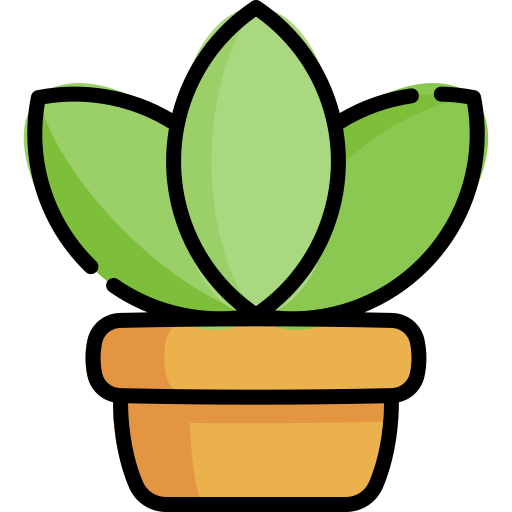Bringing the timeless beauty of roses into your home might seem like a gardener’s fantasy, but it’s more achievable than you think. Growing roses indoors allows you to enjoy their stunning blooms and delicate fragrance year-round, regardless of the weather outside. This guide will walk you through everything you need to know, from selecting the perfect variety to troubleshooting common issues. You’ll soon discover that with a little care and the right knowledge, you can cultivate a thriving indoor rose garden that brightens any room.
This comprehensive guide will cover all the essential steps for success. We’ll explore the best rose types for indoor life, gather the necessary supplies, and provide a detailed planting process. You’ll also learn the secrets to maintaining healthy, vibrant plants and how to tackle any challenges that arise.
Introduction to Indoor Rose Gardening
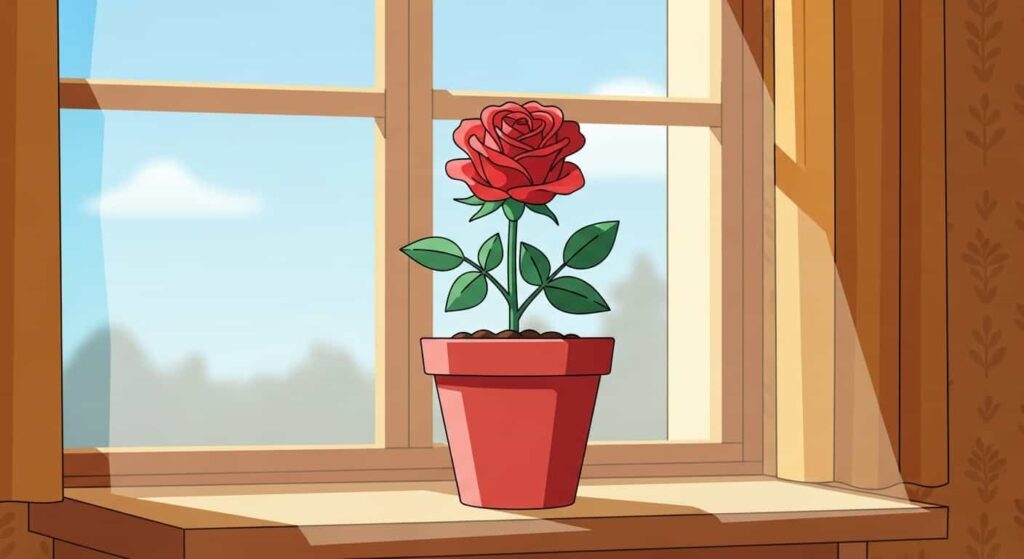
Growing roses indoors is a rewarding hobby that combines the joy of gardening with the convenience of an indoor environment. Unlike their outdoor counterparts, indoor roses are protected from harsh weather, unpredictable pests, and damaging diseases. This controlled setting gives you, the gardener, complete authority over your plant’s well-being. You can fine-tune the light, water, and nutrients to create the perfect conditions for lush growth and abundant flowers.
The key to success is understanding that an indoor rose differs slightly from those grown in a garden bed. Light is often the biggest challenge, but with modern solutions like grow lights, it’s an obstacle that is easily overcome. Similarly, humidity and air circulation become more significant factors when a plant is kept inside. By mimicking the best aspects of an outdoor environment while eliminating its drawbacks, you can create a haven for your roses. This guide is designed to empower you with the knowledge to do just that, turning your home into a personal rose conservatory.
Choosing the Right Rose Varieties for Indoor Growth
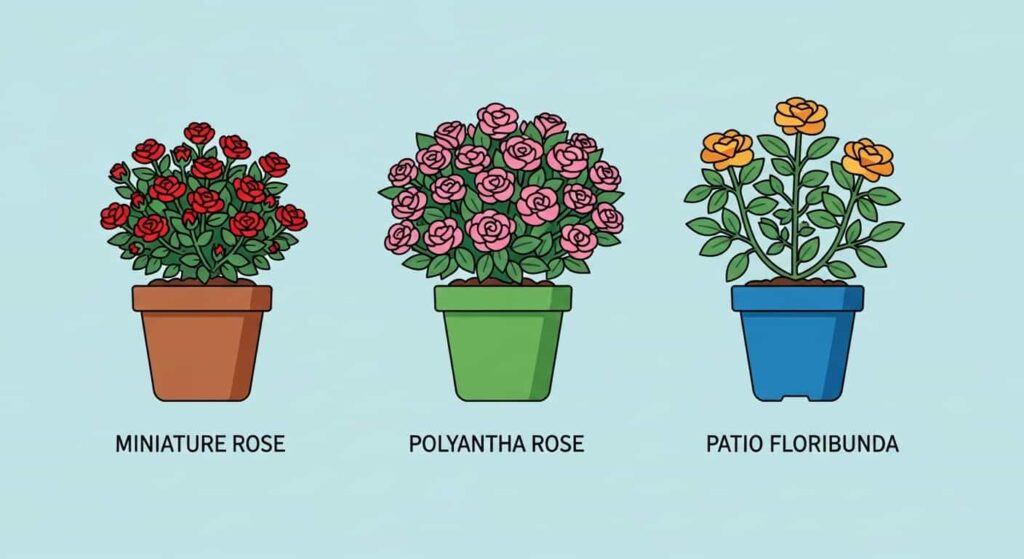
Not all roses are suited for life indoors. Large, sprawling varieties such as climbing roses or grandifloras will quickly outgrow even the most spacious room. The best choices are compact, naturally smaller varieties that feel right at home in a container.
Miniature Roses
As their name suggests, miniature roses are the top choice for indoor cultivation. These charming plants typically grow between 6 and 18 inches tall, making them perfectly sized for a sunny windowsill or tabletop. They produce a profusion of small, classic-looking rose blooms in a wide array of colors. Because they are bred for their compact size, they adapt exceptionally well to pot culture. Look for varieties like ‘Gourmet Popcorn,’ ‘Cinderella,’ or ‘Sunblaze’ series.
Polyantha Roses
Polyantha roses are another excellent option. They are known for producing large clusters of small flowers on a compact, bushy plant. While slightly larger than miniatures, they remain manageable in containers, usually staying under 2-3 feet in height. They are hardy, disease-resistant, and bloom profusely throughout the season, offering a constant display of color.
Patio and Small Floribunda Roses
Some smaller Floribunda roses, often marketed as “patio roses,” can also thrive indoors if given a large enough container and sufficient light. These varieties offer the classic rose shape in a more compact form than their larger relatives. They produce flowers in clusters and are known for their continuous blooming cycle. Be sure to check the plant’s label for its mature size to ensure it will not overwhelm your space.
When selecting your plant from a nursery or garden center, look for a healthy specimen with green, vibrant leaves and no signs of pests or disease. Check for yellowing leaves, black spots, or any visible insects before bringing it home.
Essential Tools and Materials Needed
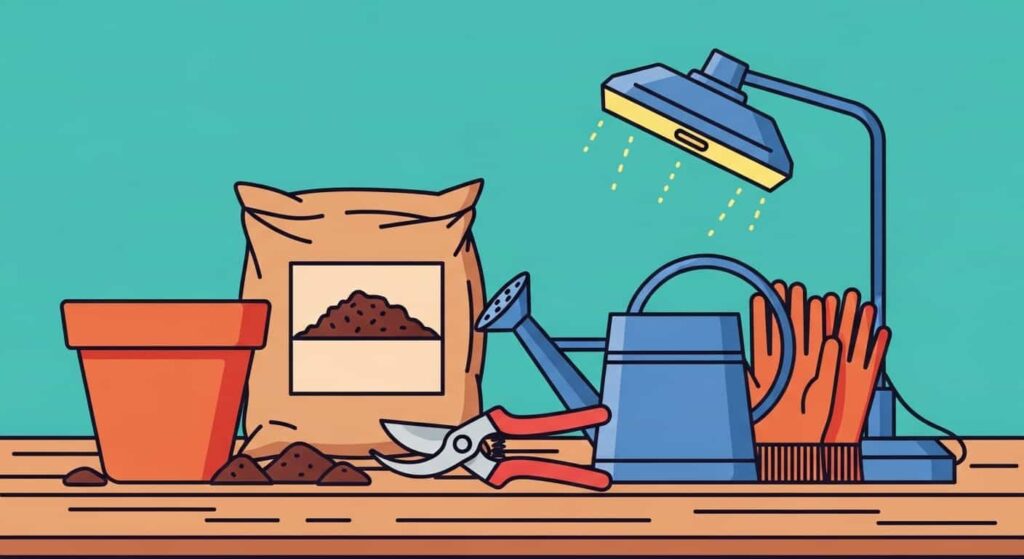
Gathering the right supplies before you start will make the planting process smooth and successful. Here is a checklist of everything you’ll need to create the perfect home for your indoor rose.
- A Suitable Container: Choose a pot that is at least 6-8 inches in diameter for a miniature rose, and larger for polyanthas or floribundas. The pot must have drainage holes at the bottom to prevent water from pooling, which can lead to root rot. Materials like terracotta are excellent as they are porous and allow the soil to breathe, but plastic or glazed ceramic pots also work well.
- High-Quality Potting Mix: Do not use garden soil, as it is too heavy and can harbor pests and diseases. Purchase a high-quality, well-draining potting mix. You can often find mixes specifically formulated for roses or containers. A good mix will contain peat moss, perlite, and vermiculite to ensure proper aeration and moisture retention.
- A Watering Can: A watering can with a long, narrow spout allows you to deliver water directly to the soil without wetting the foliage, which helps prevent fungal diseases.
- Pruning Shears: A sharp, clean pair of bypass pruning shears is essential for deadheading spent blooms, trimming away dead or diseased canes, and shaping your plant.
- Fertilizer: Indoor roses are heavy feeders and need regular nutrients to produce flowers. Select a balanced, water-soluble fertilizer formulated for roses or flowering plants.
- A Grow Light (Optional but Recommended): Unless you have a south-facing window that receives at least six hours of direct sunlight daily, a full-spectrum LED grow light is a wise investment. It will ensure your rose gets the light it needs to thrive and bloom.
- A Saucer or Tray: Place a tray under your pot to catch excess water and protect your furniture. Adding a layer of pebbles to the tray and keeping it filled with water can also help increase local humidity.
- Gloves: A good pair of gardening gloves will protect your hands from thorns.
Step-by-Step Guide to Planting Roses Indoors
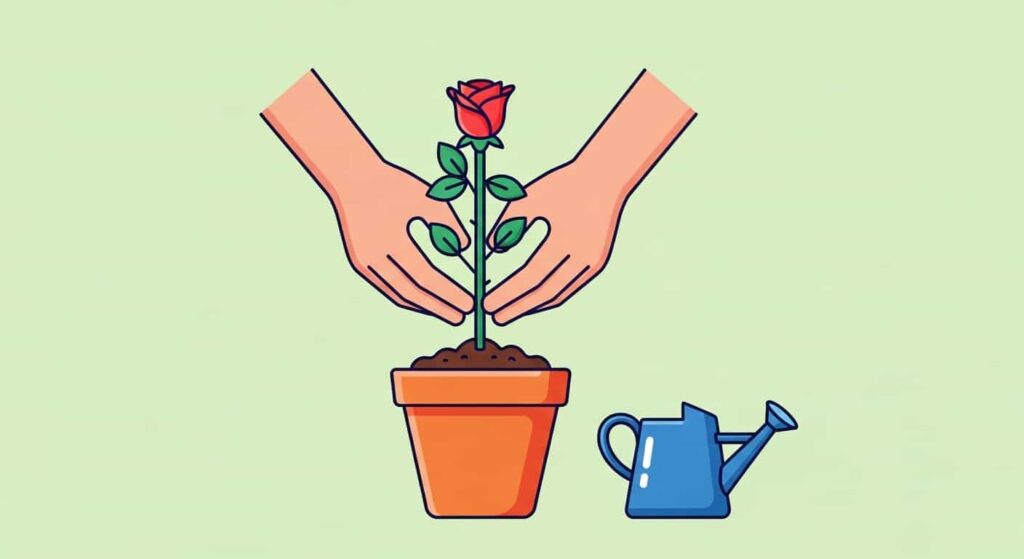
With your materials gathered, you are ready to plant your new rose. This process is straightforward and sets the foundation for a healthy plant.
- Prepare the Pot: If you are using a terracotta pot, soak it in water for about 30 minutes to prevent it from wicking moisture away from the soil. Place a piece of a broken pot or a coffee filter over the drainage hole to prevent soil from washing out.
- Add Potting Mix: Fill the pot about one-third full with your high-quality potting mix. Moisten the mix lightly with water.
- Remove the Rose from its Nursery Pot: Gently squeeze the sides of the nursery pot to loosen the plant. Tip it on its side and carefully slide the rose out, supporting the base of the plant with your hand. Avoid pulling it by the stems.
- Inspect and Loosen the Roots: Examine the root ball. If the roots are tightly wound in a circle (a condition known as being “root-bound”), gently tease them apart with your fingers. This encourages the roots to grow outward into the new soil.
- Position the Plant: Place the rose in the center of the new pot. The top of the root ball should sit about an inch below the rim of the pot. This space allows for easy watering.
- Fill with Soil: Add more potting mix around the root ball, gently firming it down with your fingers to remove any air pockets. Fill the pot until the soil level is even with the top of the root ball.
- Water Thoroughly: Water the plant well until you see water running out of the drainage holes into the saucer. This ensures the entire root system is hydrated and helps the soil settle. After about 15 minutes, empty any excess water from the saucer.
Tips for Maintaining Healthy Indoor Roses
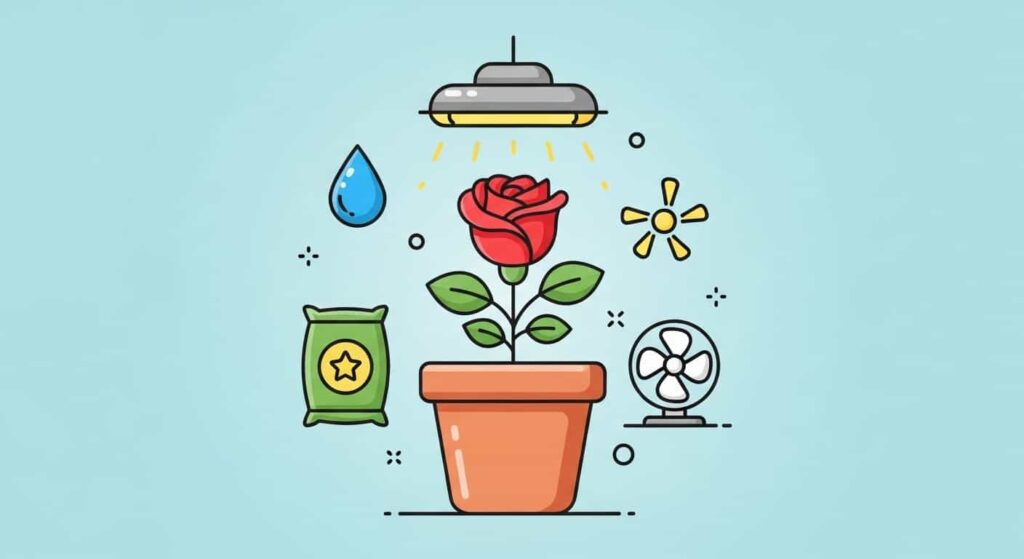
Once your rose is potted, the real journey begins. Consistent care is the key to keeping your plant healthy and encouraging it to bloom.
Light Requirements
Roses are sun-loving plants. Place your potted rose in the sunniest spot in your home, ideally a south-facing window that provides at least 6-8 hours of direct sunlight per day. If you don’t have adequate natural light, supplement with a grow light. Position the light 12-18 inches above the plant and leave it on for 12-16 hours daily. Rotate your plant every few days to ensure all sides receive equal light.
Watering Practices
Proper watering is critical. The goal is to keep the soil consistently moist but not waterlogged. Check the soil every few days by inserting your finger about an inch deep. If it feels dry, it’s time to water. Water thoroughly until it drains from the bottom, then discard the excess from the saucer. Overwatering is a common mistake and can lead to root rot, a fatal condition.
Humidity and Air Circulation
Indoor environments, especially those with central heating or air conditioning, can be very dry. Roses prefer a humidity level of around 40-50%. To increase humidity, you can place a small humidifier near your plant, group it with other plants, or use a pebble tray. Air circulation is also important to prevent fungal diseases like powdery mildew. A small, gentle fan placed nearby for a few hours a day can work wonders.
Fertilizing for Abundant Blooms
Container-grown roses quickly use up the nutrients in their soil. To support continuous blooming, you need to fertilize regularly. During the growing season (spring and summer), feed your rose every 2-4 weeks with a balanced, water-soluble fertilizer. Follow the package instructions for dilution, as over-fertilizing can burn the roots. Reduce feeding to once a month in the fall and stop completely in the winter to allow the plant a period of rest.
Pruning and Deadheading
Pruning is essential for maintaining the shape and health of your indoor rose. In late winter or early spring, prune back any dead, weak, or crossing branches. Aim to open up the center of the plant to improve air circulation.
Deadheading, or removing spent blooms, is equally important. Once a flower starts to fade, snip it off at the stem, just above the first set of five leaflets. This encourages the plant to produce new flowers instead of putting energy into making seeds.
Common Challenges of Growing Indoor Roses and How to Overcome Them

Even with the best care, you may encounter some issues. Here’s how to identify and solve the most common problems.
Pest Infestations
- Spider Mites: These tiny pests are the most common issue for indoor roses. You’ll notice fine webbing on the undersides of leaves and a stippled, faded appearance. They thrive in dry conditions. To combat them, increase humidity and wash the plant thoroughly with a strong spray of water, focusing on the undersides of the leaves. For persistent infestations, use an insecticidal soap.
- Aphids: These small, soft-bodied insects cluster on new growth and flower buds. They can be dislodged with a spray of water or wiped off with a damp cloth. Insecticidal soap is also effective.
Common Diseases
- Powdery Mildew: This fungal disease appears as a white, powdery coating on leaves and stems. It is caused by poor air circulation and high humidity. Improve air circulation with a fan and avoid wetting the leaves when you water. Prune away heavily affected parts and treat with a fungicide if necessary.
- Black Spot: This is another fungal disease that causes black spots on the leaves, which then turn yellow and drop off. It is less common indoors but can occur. Remove and dispose of affected leaves immediately, ensure good air circulation, and keep foliage dry.
Yellowing Leaves
Leaves turning yellow can be a sign of several issues. Overwatering is the most common cause. Ensure the soil is drying out slightly between waterings. Yellow leaves can also indicate a nutrient deficiency, particularly nitrogen. If you haven’t been fertilizing regularly, it may be time to start. Finally, it’s normal for the oldest, lowest leaves to occasionally turn yellow and drop as the plant grows.
Benefits of Growing Roses Indoors

Beyond the sheer beauty they provide, growing roses indoors offers a host of benefits.
- Year-Round Enjoyment: You can enjoy fresh, fragrant roses in any season, bringing a touch of summer into your home even in the dead of winter.
- Improved Air Quality: Like other houseplants, roses help purify the air by absorbing toxins and releasing oxygen.
- Therapeutic Hobby: The act of caring for a plant can be incredibly relaxing and rewarding. Tending to your rose provides a mindful escape from daily stress.
- Aesthetic Enhancement: A blooming rose plant is a stunning decorative element that can elevate the ambiance of any room, adding color, life, and elegance.
Cultivating roses indoors is a delightful and fulfilling experience. By choosing the right variety, providing the proper care, and paying close attention to your plant’s needs, you can successfully grow these iconic flowers inside your home. Embrace the process, and you’ll be rewarded with beautiful blooms that bring joy and tranquility to your indoor space.
